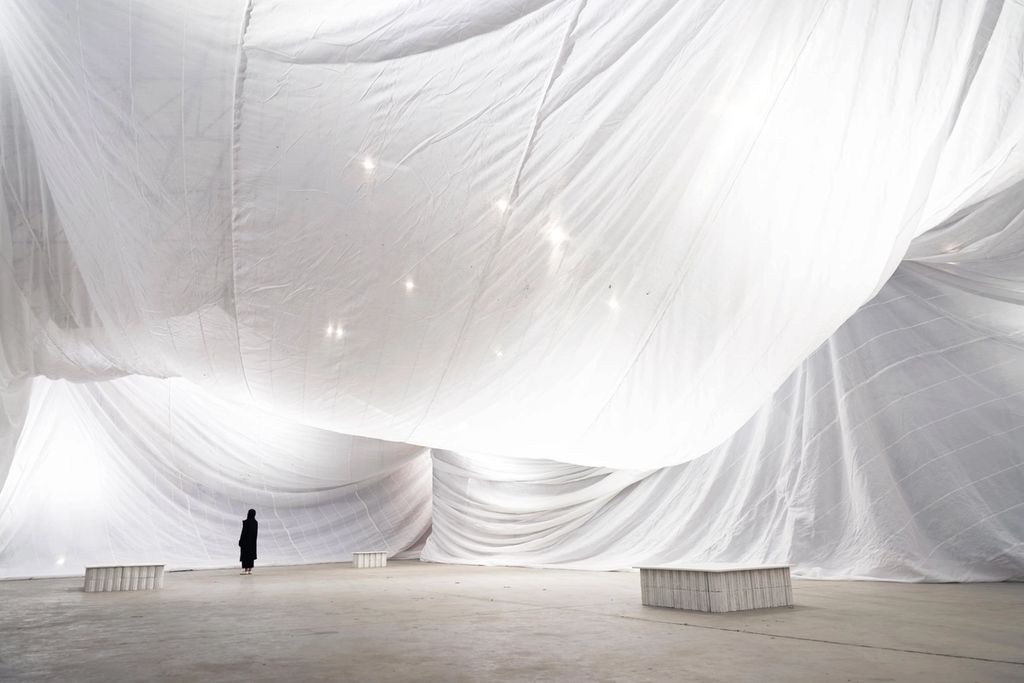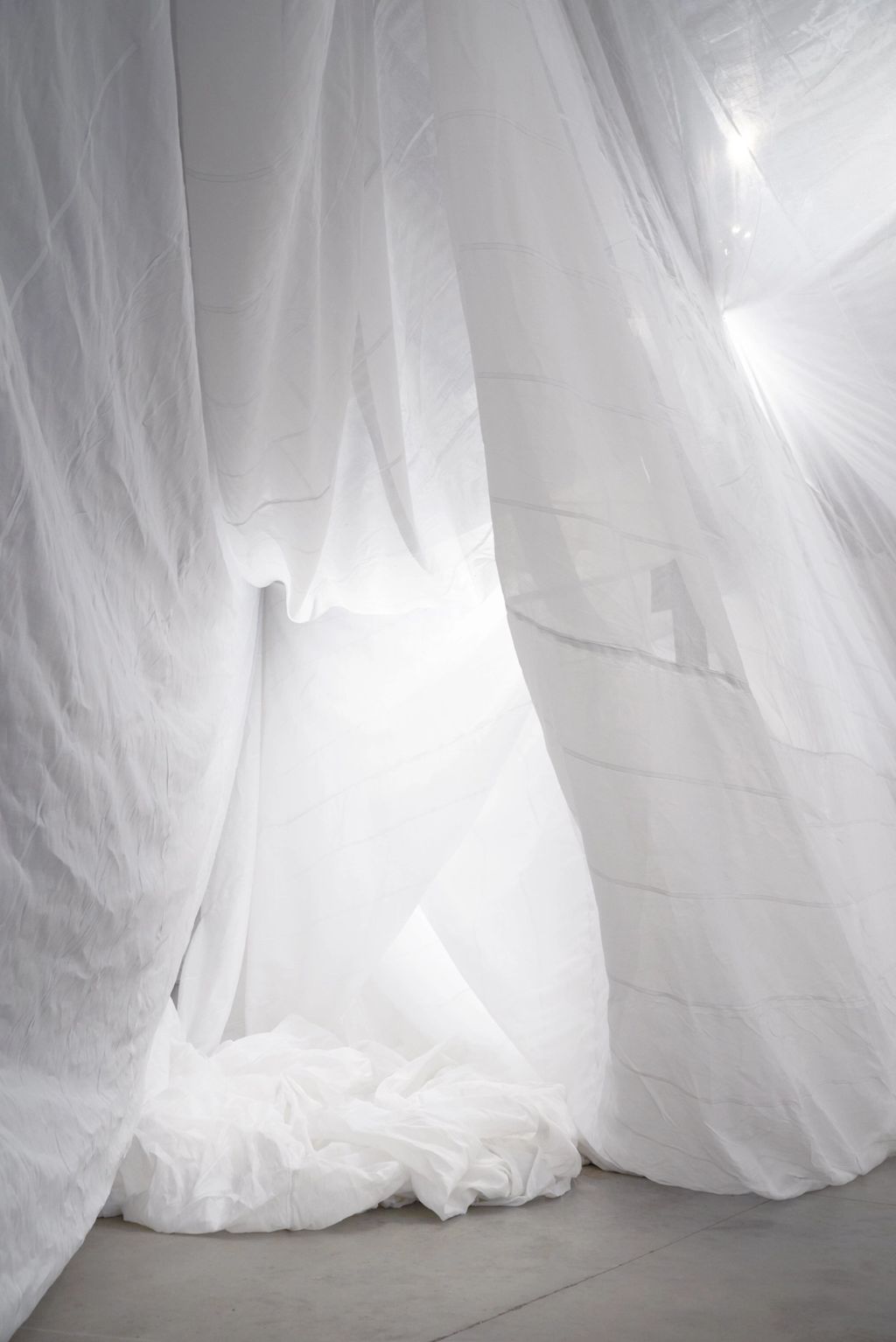FOS

Date: December 2018 Location: Kortrijk, Belgium Area: 780m2 Function: Spatial installation Status: Built Collaborator: Future of Space, Jaenan Lim, Jasna Dimitrovska Sponsor: City of Kortrijk, UNESCO Creative City Organizer: Designregio Kortrijk
Like many post-industrial cities in Europe, the city of Kortrijk has been troubled with finding a way to utilise inactive industrial heritages. Those great numbers of legacies remained unused for decades after the flourishing of textile production in the 20th century. The major problem the legacies face are security concerns and financial issues. FOS is designed as a spatial tool that inhabits the legacies to temporarily activate them for the public while providing secured internal space. 2700 square meters of scaffolding tarpaulin was sewn together to secure the space from any falling fragments from the old roof whilst creating immersive spatial experiences in abandoned heritages. The project is done collaborating with Future of Kortrijk, Interaction Designer, Jasna Dimitrovska and Spatial Designer Jaenam Lim. The project is organized by Designregio Kortrijk, a member of the UNESCO Design City program.

The common problem of abandoned industrial buildings from this region is mainly financial and security issues. FOS is designed with a low-cost material, scaffolding tarpaulin, which flexibility and durability allow those abandoned industrial spaces to be transformed and repurposed. 2700 square meters of scaffolding tarpaulin was sewn together to secure the interior space from any falling fragments from the old ceiling. The spatial tool is designed to be easily installed within one day by using multiple hoisting points that attach to the existing steel structure, which all inactive industrial buildings in the region have in common. The Vlaspark, where the building site is located in the municipality of Kuurne has played a crucial role in the Kortrijk region’s economic development, the production and trade in flax in the mid-19th century. However, with the shift in the economic model, architectural typology resulted in obsolete landscapes, infrastructures and buildings that were once of main importance are now residual spaces. The Vlaspark is a key example that represents abandoned nature or urban landscapes and there are many more locations that are facing this similar situation, awaiting a new future. FOS enables those inactive industrial buildings to be repurposed as a new public space. The ultimate goal of this project is to create immersive spatial experiences in every abandoned heritage in the region thus the citizens start discovering the potential in the forgotten legacies. This spatial system is open for any group of citizens and organisations to envision public activities and events. To demonstrate the transformation possibilities the team created a projection mapping installation by collaborating with Berlin-based artist Omar Elkammar.



